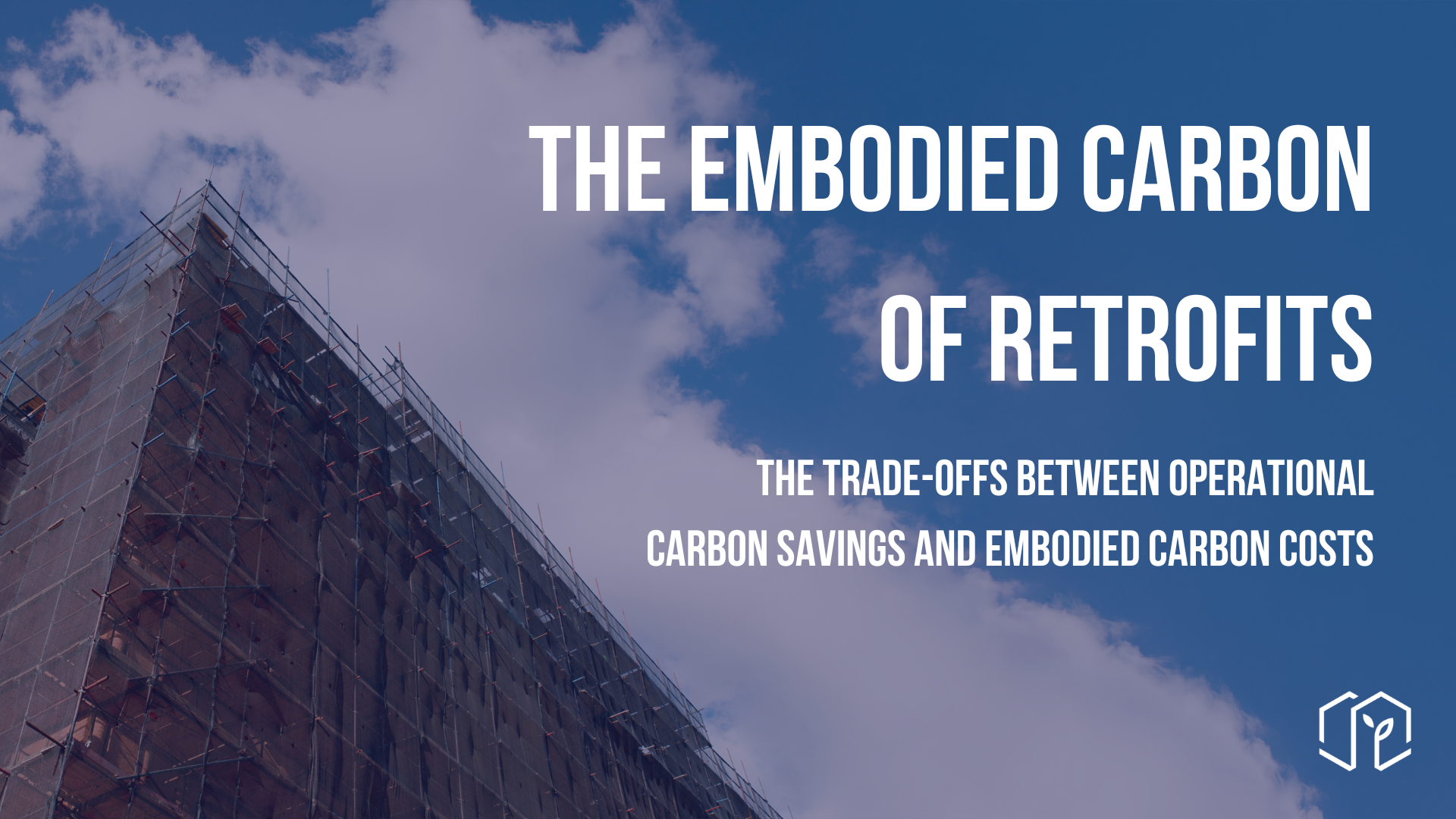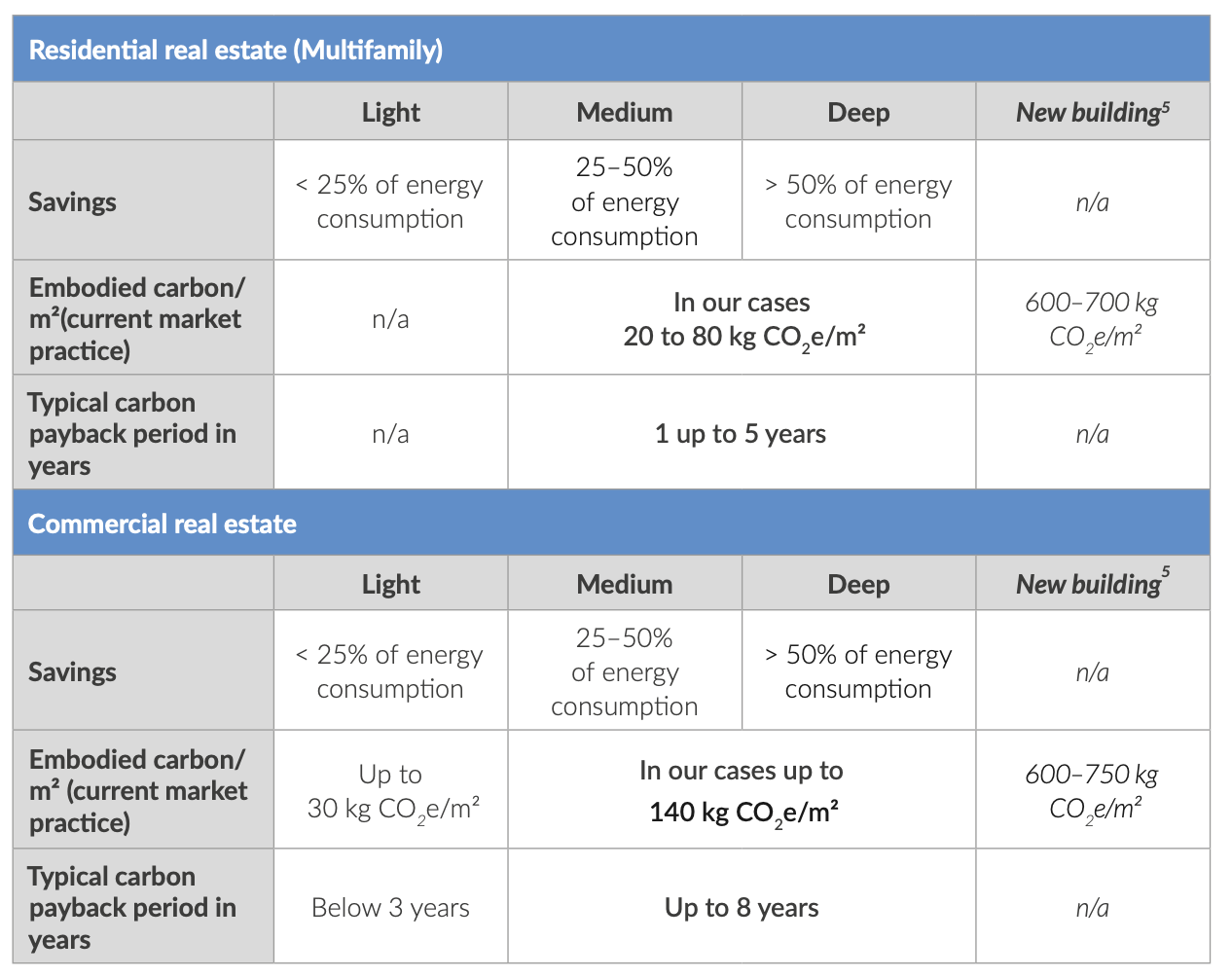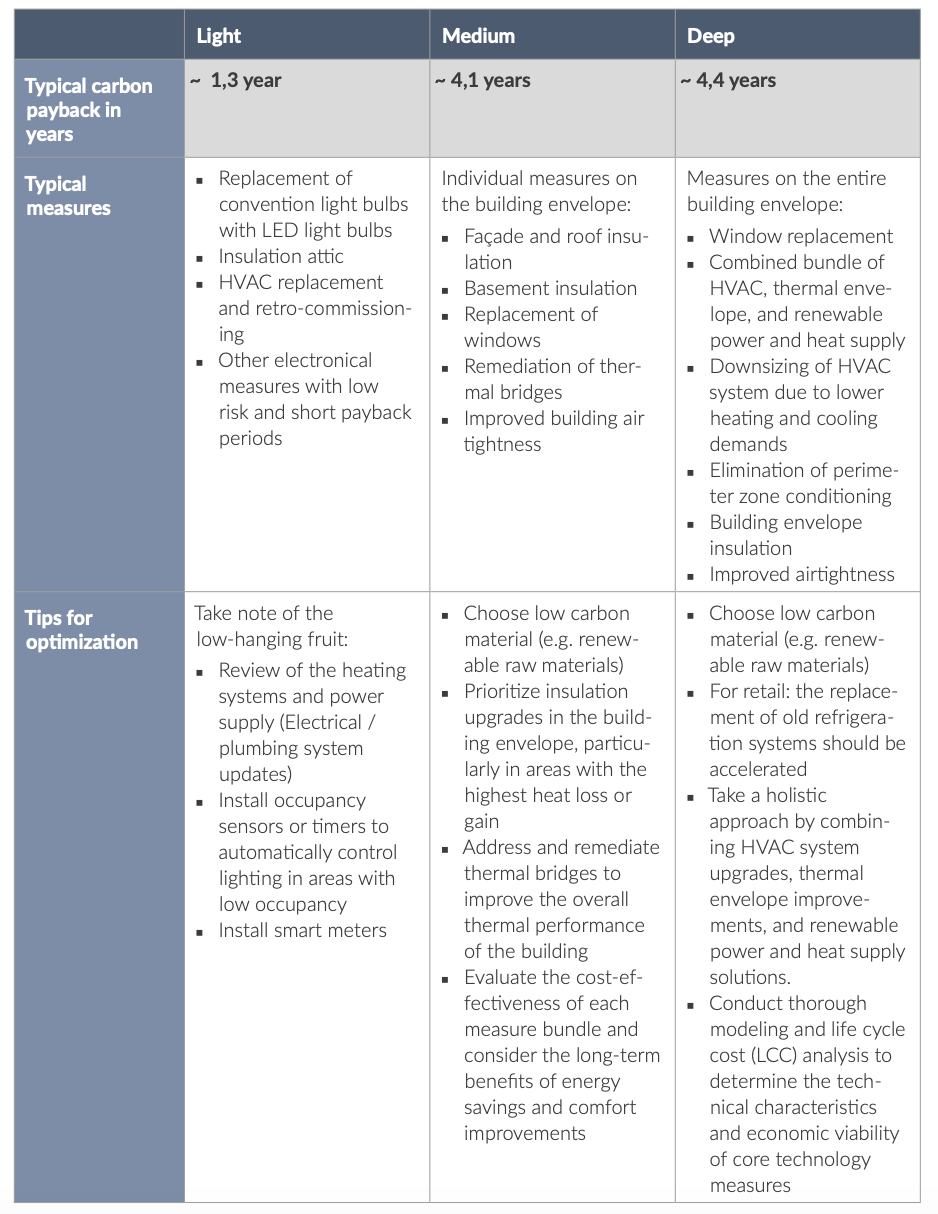The Embodied Carbon of Retrofits
Read Time 5 mins | Written by: Alex Bantock
Retrofits aimed at enhancing energy efficiency also pose significant embodied carbon costs. The CRREM report highlights the necessity to balance operational savings and embodied carbon in retrofits. Adopting low-carbon solutions and assessing carbon payback periods as KPIs could make retrofits better aligned with our Net Zero trajectory.
Our battle against climate change has been and will continue to be an uphill battle. While sustainability efforts have ramped up in the last few years, misinformed actions based on industry sentiments of ‘best practice’ have the potential to cause increased friction on our journey.
Considering that a significant proportion of buildings expected to be in use by 2050 in developed nations are already constructed, there is a pressing need to address the carbon implications of the existing built environment by retrofitting buildings. Retrofits have traditionally served as a strategy to modernise and reduce the operational energy of buildings by improving their energy efficiency; however, undertaking such energetic retrofits necessitates substantial investment and extensive construction activities. Buildings are thermally insulated, windows are triple-glazed, and building automation is mostly renewed. But now the question is being raised: are we incurring significant carbon costs when improving the energy efficiency of our buildings?

Carbon Trade-Offs in Retrofits
Retrofits, while being an energy-efficiency endeavour, are projected to emit 30-40 gigatonnes of CO2e by 2050. That's 8.5% of the global greenhouse gas budget in alignment with a 1.5-degree Celsius world, starting from 2020.
These emissions can be attributed to the embodied carbon in construction materials. Embodied carbon in construction refers to the carbon emissions produced during the manufacture, transportation, assembly, demolition and eventual disposal of building materials. This is different from operational carbon, which is the carbon emitted during a building's usage phase, primarily from heating, cooling, and lighting.
The Carbon Risk Real Estate Monitor (CRREM), an initiative backed by major entities that translates the Paris Agreement's goals into actionable real estate benchmarks, released a report 'Embodied Carbon of Retrofits'. The report demonstrates that the building retrofit process comes with its challenges, mainly the trade-off between operational energy savings and the embodied carbon emissions incurred during retrofits, and highlights that while we strive for operational efficiencies, we cannot turn a blind eye to the potentially significant embodied carbon footprint.
The upside? By adopting low-carbon solutions and smarter refurbishments, this figure can be substantially reduced. The report found that switching from conventional construction materials to low-carbon and bio-based solutions has the potential to reduce up to 50% of the CO2e emissions from retrofits.
An overview of the different scopes of retrofit (Light, Medium, Deep) and their corresponding characteristics from the CRREM report.
The Current Research Landscape
The industry is rife with research on embodied carbon in new construction. However, when it comes to understanding the embodied carbon vs. operational carbon savings during retrofits, the field is notably barren. Despite the abundance of best-practice retrofit case studies, only a handful are dedicated to examining embodied carbon. This void in research is especially surprising given the tightening regulatory frameworks around EPDs and carbon limits, signalling a need for increased examination and a warning for asset owners to be well-prepared.
Benchmarking Embodied Carbon
Benchmarks provide a standardised measure for evaluating project performance, ensuring consistency, promoting continuous improvement, and facilitating informed decision-making. The industry's focus is, unquestionably, on reducing embodied carbon in new constructions, with few insights into retrofits. Established guidelines, such as those by LETI, advocate values like < 350 kg CO2e/m2 for non-residential buildings and < 300 kg CO2e/m2 for residential buildings. In contrast, real-world averages for new constructions, as stated by Ramboll and Hines, are much higher in the range of 500-750 kg CO2e/m2.
The CRREM report outlines a comprehensive analysis of 36 global energetic retrofit projects encompassing diverse use types across varying regions and climatic conditions. It was observed that embodied carbon emissions associated with these retrofits ranged between 20–140 kg CO2e/m2. When comparing these metrics with the associated operational savings —ascertained via the carbon intensity in kg CO2e/m2/year pre and post-retrofit — a carbon payback period of up to eight years was derived.
Given the substantially extended residual lifespan of the assets, all retrofits were deemed ecologically favourable. Meaning that the embodied carbon ‘cost’ of these retrofits and refurbishments could be repaid within 8 years by operational carbon savings resulting from increased energy efficiency. Between the lower-end and best-in-class approaches, they identified significant potential for further optimisation by incorporating an increased proportion of low-carbon and bio-based materials.
 Suggested A1-A3 benchmarks from the CRREM report
Suggested A1-A3 benchmarks from the CRREM report
With a significant portion of the construction work, especially in developed markets, lying in retrofits, it is therefore imperative to develop benchmarks for retrofitting projects that can be used to compare embodied carbon costs with operational carbon savings.
Towards Holistic Retrofit Decisions
The real estate industry's sustainable evolution over the past decades can arguably be attributed first to the recognition of moral duty and the actions of individual built environment stakeholders and industry groups, and secondly to regulatory measures. For a sustainable transformation to occur at the scale we need, however, regulatory measures need to be implemented with rigorous carbon mandates for both retrofits and new builds. It is crucial to establish verifiable data requirements at every stage of the building lifecycle, ensuring transparent and accountable sustainability performance.
Nevertheless, despite our urge to charge forward with sustainable actions being strong (and necessarily so), we also need to remain deeply aware of the challenges. We must acknowledge the trade-offs between energy efficiency solutions and the embodied carbon footprint of materials needed to achieve these energy efficiency improvements. Retrofits should address the balance between embodied carbon (in kg CO2e/m2) and operational savings (in kg CO2e/m2/year) by calculating the carbon payback period (in years). Not all retrofits will be ecologically favourable ones and we risk emitting unnecessary (or avoidable) emissions when this balance is not checked. By making the carbon payback period a key performance indicator (KPI) in our projects, we can ensure that energetic retrofits are not compromising our Net Zero trajectory.
After all, balancing environmental considerations with economic ones is the real essence of sustainability.
Resources
We'd love to hear from you!

